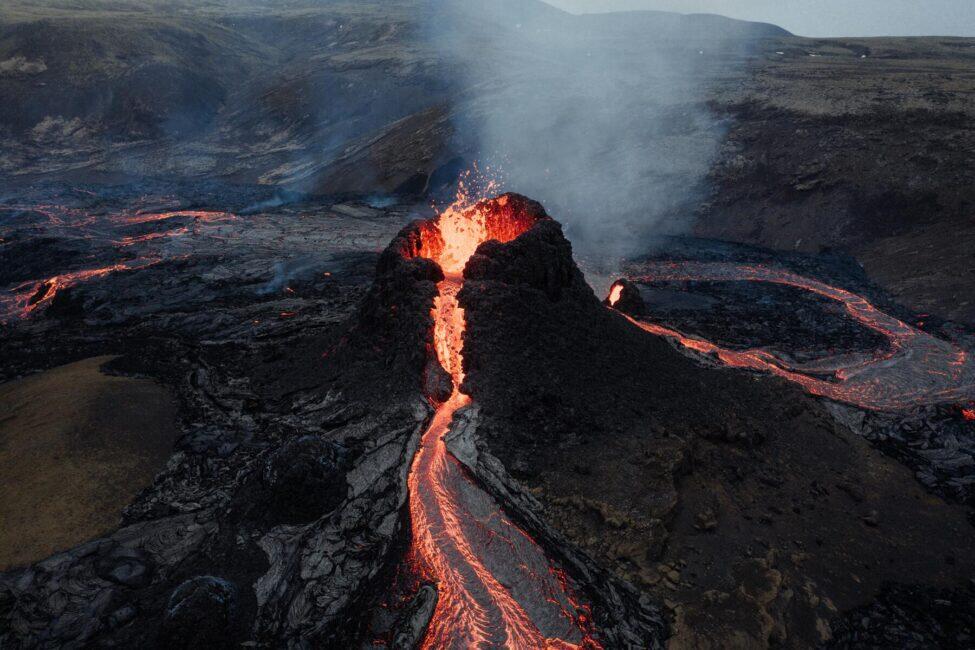Because someone needs to.
During a recent trip to a geothermal spa in Iceland, I was surrounded by groups of locals soaking in the warm water with their friends, gazing at the Atlantic Ocean and the active volcanic eruption just across the bay. It was a normal Thursday evening except for one thing—the influencer couple taking videos and photos, taking a long time striking pose after pose, completely unaware of others who wanted to experience it. Yes, the travel influencers are back in Iceland.
After a year of limping tourism, recent border changes made traveling internationally possible for many who had counted it out. In countries that welcome tourists, such as Bali, some influencers disregard local requirements and refuse to wear a mask. I’ve lived in Iceland during the tourist boom and the COVID-induced downturn, and have mixed feelings about the return of tourism. Walking down Reykjavík’s once-bustling main street that is now a ghost town of empty storefronts is sad; I want tourists back. However, seeing travel influencers post “come to Iceland, it’s empty now” makes me hesitate. Is that the only reason to go and visit a place? For the bragging right of having it to yourself?
Recommended Fodor’s Video
Tourism is based on the model of guest and host in the classic sense of hospitality. It used to be that destination management organizations (DMOs) created the messaging on how to market a destination, but with the rise of social media and the fact that social media is replacing the role of travel agents, DMOs have turned to travel influencers to collaborate on spreading the popularity of a destination. While each destination works with influencers differently, both macro and micro-influencers have the ability to shape behavior—one person visits a place and others follow. Where this becomes problematic is that the host/guest relationship changed so that instead of the host speaking to the guest, we get guests speaking to other guests. It seems fitting that the rise of the travel influencer correlates with the concept of overtourism, which was inspired by Iceland’s meteoric tourism boom.
Now that tourism is coming back to Iceland and many other countries this summer, here’s what I would like to tell the travel influencers:
Be Respectful of the Host Community
Travel influencers taking risky photos, endangering themselves and others, is well documented, but their actions don’t take place in a bubble, they affect the local community. Last summer while I was driving down the main Route 1, I saw a few tourists trying to hitchhike. This was when we were experiencing our second wave of COVID. It took me a second to understand how someone could think that hitchhiking during a pandemic and potentially infecting the local community, was a good idea. This kind of behavior shows a general lack of respect. There were instances of tourists knowingly breaking quarantine and a travel influencer choosing to get tested once instead of twice because the process was too complicated and posting about it on YouTube. Whereas a lot has changed in a year, and now vaccinated tourists can thankfully travel more freely, restrictions are always changing and it is important for influencers to understand that their actions are setting an example for others.

Don’t Destroy Nature in an Attempt to Get the Perfect Shot
Iceland has been making progress this year in building infrastructure like parking lots and viewing platforms for popular destinations, but that doesn’t mean that everything is up for grabs. It takes hundreds of years for moss to grow back—behavior like off-road driving, which is banned, and going off-trail has long-lasting effects after influencers return home.
Don’t Encourage Risky Behavior
With the privilege of traveling comes a responsibility to the host country and the destination. An example of this done well is the relationship that Chris Burkard, who is an internationally known photographer and filmmaker, has with Iceland. He has visited Iceland dozens of times and was in Iceland when the Geldingadalur volcano began to erupt. While he documented the eruption for his 3.6 million followers, he also posted about ICE-SAR, the volunteer-led rescue organization in Iceland which is organizing the effort and keeping the site safe. The fact that he used his platform to educate his followers about the importance of this rescue team and the realities of safety shows that he truly deserves the title, Íslandsvinur, or “friend of Iceland.”
Instead of approaching travel as a way to list how many countries they’ve traveled to–checking off countries visited like a to-do list–travel influencers at their best can inspire their audience to broaden their horizons and embrace a new experience. Perhaps what we need is to hear wisdom from one of the original travel influencers, Rick Steves, who shared in his May post about travel to Europe this quote, “Going forward, let’s count our blessings and make a point to travel ‘on purpose’–savor those moments that we’ve missed out on, reconnect with the Europeans we’ve been missing, and travel as invited guests who are curious, respectful, and flexible.” I couldn’t have said it better.





I continue to be amazed by "influencers" why?? I want the facts, give me a great guide book, yes I still use them and have a great collection, and the internet. I will plan an amazing trip. An "influencer" (a sad title) someone I don't know, who hasn't proven their ability telling me what to do, where to go, where to eat - that's like walking up to a stranger and asking them where one should go to dinner, what would make anyone think that a recommendation coming from this stranger would meet their needs? One of the worse things about social media - - - influencers. I just don't understand people who pay attention to them
Agree.